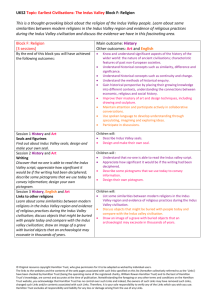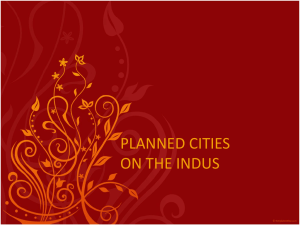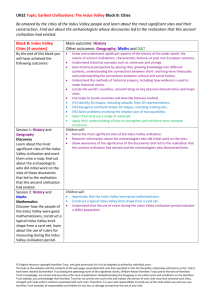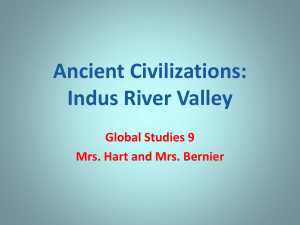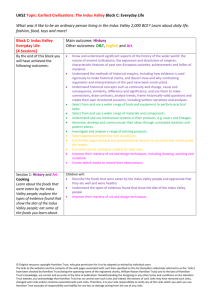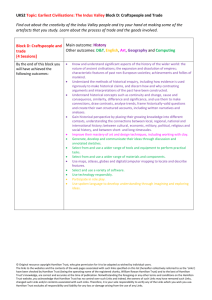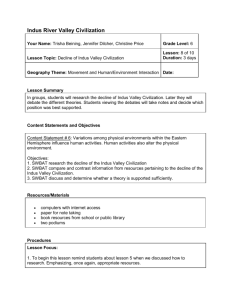Block Outcomes - Hamilton Trust
advertisement
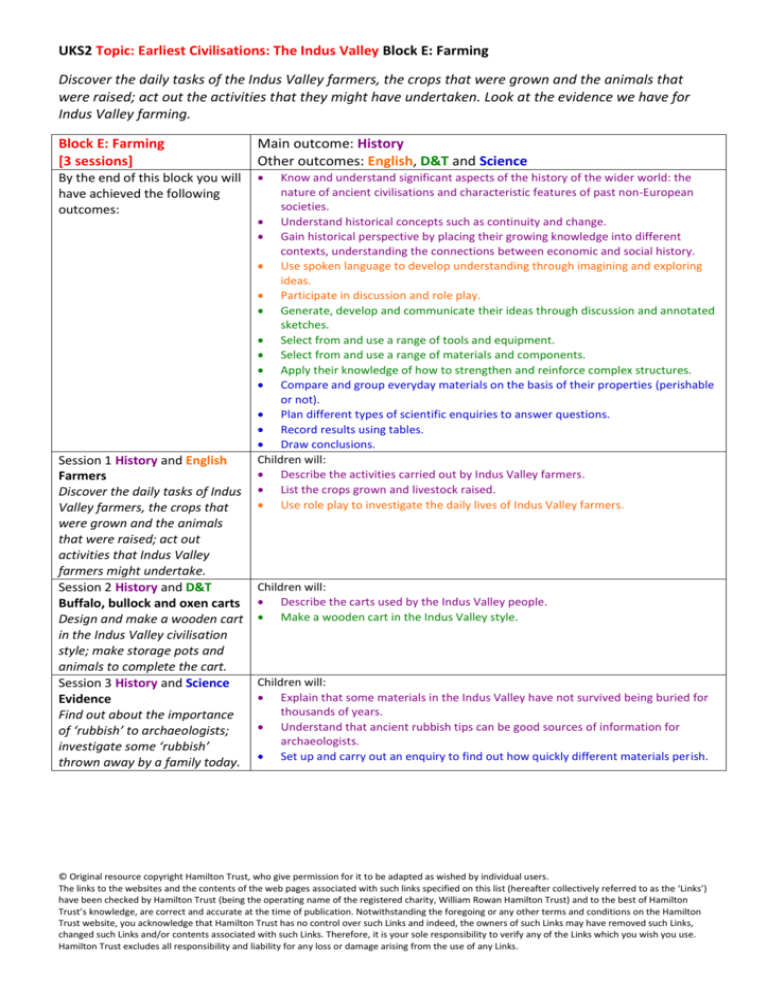
UKS2 Topic: Earliest Civilisations: The Indus Valley Block E: Farming Discover the daily tasks of the Indus Valley farmers, the crops that were grown and the animals that were raised; act out the activities that they might have undertaken. Look at the evidence we have for Indus Valley farming. Block E: Farming [3 sessions] Main outcome: History Other outcomes: English, D&T and Science By the end of this block you will have achieved the following outcomes: Session 1 History and English Farmers Discover the daily tasks of Indus Valley farmers, the crops that were grown and the animals that were raised; act out activities that Indus Valley farmers might undertake. Session 2 History and D&T Buffalo, bullock and oxen carts Design and make a wooden cart in the Indus Valley civilisation style; make storage pots and animals to complete the cart. Session 3 History and Science Evidence Find out about the importance of ‘rubbish’ to archaeologists; investigate some ‘rubbish’ thrown away by a family today. Know and understand significant aspects of the history of the wider world: the nature of ancient civilisations and characteristic features of past non-European societies. Understand historical concepts such as continuity and change. Gain historical perspective by placing their growing knowledge into different contexts, understanding the connections between economic and social history. Use spoken language to develop understanding through imagining and exploring ideas. Participate in discussion and role play. Generate, develop and communicate their ideas through discussion and annotated sketches. Select from and use a range of tools and equipment. Select from and use a range of materials and components. Apply their knowledge of how to strengthen and reinforce complex structures. Compare and group everyday materials on the basis of their properties (perishable or not). Plan different types of scientific enquiries to answer questions. Record results using tables. Draw conclusions. Children will: Describe the activities carried out by Indus Valley farmers. List the crops grown and livestock raised. Use role play to investigate the daily lives of Indus Valley farmers. Children will: Describe the carts used by the Indus Valley people. Make a wooden cart in the Indus Valley style. Children will: Explain that some materials in the Indus Valley have not survived being buried for thousands of years. Understand that ancient rubbish tips can be good sources of information for archaeologists. Set up and carry out an enquiry to find out how quickly different materials perish. © Original resource copyright Hamilton Trust, who give permission for it to be adapted as wished by individual users. The links to the websites and the contents of the web pages associated with such links specified on this list (hereafter collectively referred to as the ‘Links’) have been checked by Hamilton Trust (being the operating name of the registered charity, William Rowan Hamilton Trust) and to the best of Hamilton Trust’s knowledge, are correct and accurate at the time of publication. Notwithstanding the foregoing or any other terms and conditions on the Hamilton Trust website, you acknowledge that Hamilton Trust has no control over such Links and indeed, the owners of such Links may have removed such Links, changed such Links and/or contents associated with such Links. Therefore, it is your sole responsibility to verify any of the Links which you wish you use. Hamilton Trust excludes all responsibility and liability for any loss or damage arising from the use of any Links. UKS2 Topic: Earliest Civilisations: The Indus Valley Block E: Farming Resources Session 1 Provided: Image of simple ard. You will need: Compost; Seeds; Pots (the chn can plant these at the start of the session and take them home to look after). Session 2 Provided: Images of model carts. You will need: Materials for making wheeled-carts, including wood of various shapes & sizes, e.g. dowelling, square section strips, off-cuts, matchsticks, lolly sticks, card; Glue (&/or glue gun with adult help); Wheels (wooden preferably, though two card wheels could be glued together with small pieces of wood to hold them apart to create thickness); Hacksaws; Scissors; Plasticine/air-dried clay to create storage pots for cart and model animals; Steel rulers; Pencils. Session 3 Provided: You will need: Black bin liner with some selected clean ‘rubbish’ from your home, e.g. food packaging, bus/train ticket, broken plastic fork, lengths of wool, an old cotton T-shirt, an old jumper, newspaper, chipped mug, photos that are surplus to requirements, old mobile phone, light bulb (care needs to be taken!), plastic comb, broken toy, jigsaw puzzle with a missing piece, plastic drinks bottle, key, plastic shopping bag, an old paperback, toy car, etc.; Garden soil or compost, sand, water, containers; Clay objects, both fired and unfired if possible; Bake some wheat & barley grains, chickpeas & lentils in a low oven for 12 hours to represent carbonisation; Seeds, pieces of wood, leaves, vegetables, paper, cardboard, fabrics (cotton, linen & woollen if possible), clean food packaging, small unwanted toys, newspaper, paper written on with different media (biro, pencil, felt tip, etc.), plastic items, drink cans, broken ceramics; Disposable gloves for handling soil/sand. © Original resource copyright Hamilton Trust, who give permission for it to be adapted as wished by individual users. The links to the websites and the contents of the web pages associated with such links specified on this list (hereafter collectively referred to as the ‘Links’) have been checked by Hamilton Trust (being the operating name of the registered charity, William Rowan Hamilton Trust) and to the best of Hamilton Trust’s knowledge, are correct and accurate at the time of publication. Notwithstanding the foregoing or any other terms and conditions on the Hamilton Trust website, you acknowledge that Hamilton Trust has no control over such Links and indeed, the owners of such Links may have removed such Links, changed such Links and/or contents associated with such Links. Therefore, it is your sole responsibility to verify any of the Links which you wish you use. Hamilton Trust excludes all responsibility and liability for any loss or damage arising from the use of any Links.


